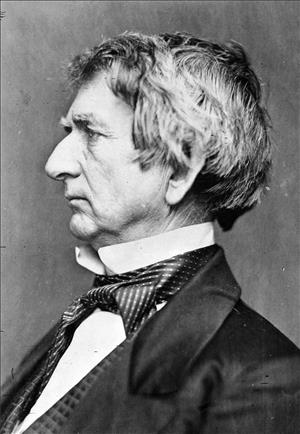On April 9, 1867, the U.S. Senate ratifies the purchase of Alaska from Russia for $7,200,000. Russia is a reluctant seller and the United States is a reluctant buyer. Many Americans think little of the purchase, and call it "Seward's Folly" after the U. S. Secretary of State William H. Seward (1801-1872), who negotiated the transaction. However, other Americans approve the purchase.
Discussions Amid Wars
Discussions between Russia and the United States to sell Russian America began in 1861. Among the reasons Russia considered selling Alaska were that keeping it would place too heavy a financial burden on Russia, and the possibility that, if Russia again went to war with Great Britain, Alaska might be invaded and seized. (From 1854 to 1856, Russia and Great Britain had opposed each other in the Crimean War.)
The Civil War in the United States brought the initial negotiations to an end. In December 1866, Russia, with some reluctance to relinquish territory, decided to ask the United States to reconsider purchasing Alaska.
The United States was receptive and on March 29, 1867, Russian Baron Edouard de Stoeckl and U.S. Secretary of State William H. Seward agreed on a price of $7,200,000 for the territory. After much debate, the U.S. Senate agreed to the terms of the treaty on April 9, 1867, by a vote of 27 to 12, just three votes more than the two-thirds majority required.
Seward's Folly
Most Americans thought Alaska had little value and that the purchase was a waste of money. The territory became known as "Seward’s Folly." But the purchase was completed and on October 18, 1867, Russia representative Captain Aleksei Pestchouroff formally transferred Alaska to United States representative Army General Lovell H. Rousseau.
In 1870, the population of Alaska was estimated at fewer than 31,000 persons.
Alaska turned out to be vital to the economy of Seattle and the Puget Sound region, beginning with the Yukon gold rush of 1897, when steamships rushed gold seekers from Seattle to Alaska (the gateway to Canada's Yukon River) and Seattle's economy boomed. In 1974, the construction of the Alaska oil pipeline ended an economic downturn in Seattle, which shipped three million tons of construction material to Alaska, and provided supplies and services for 70,000 pipeline workers passing through. Alaska continues to be vital to the economy of Western Washington especially via Washington-based fleets that fish in Alaska waters, and Alaska-bound cruises and tour boats that dock in Seattle.

